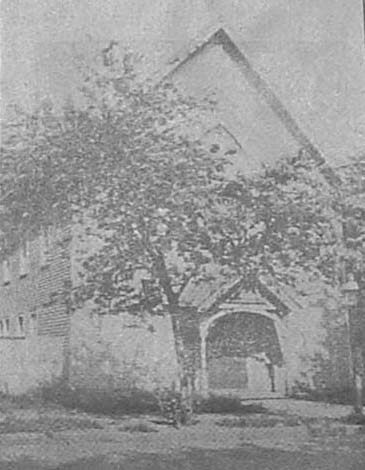
First Swedish Baptist Church
They moved west also, to 34th and Burt in 1922, where they remained until the 30's. Did this church survive?
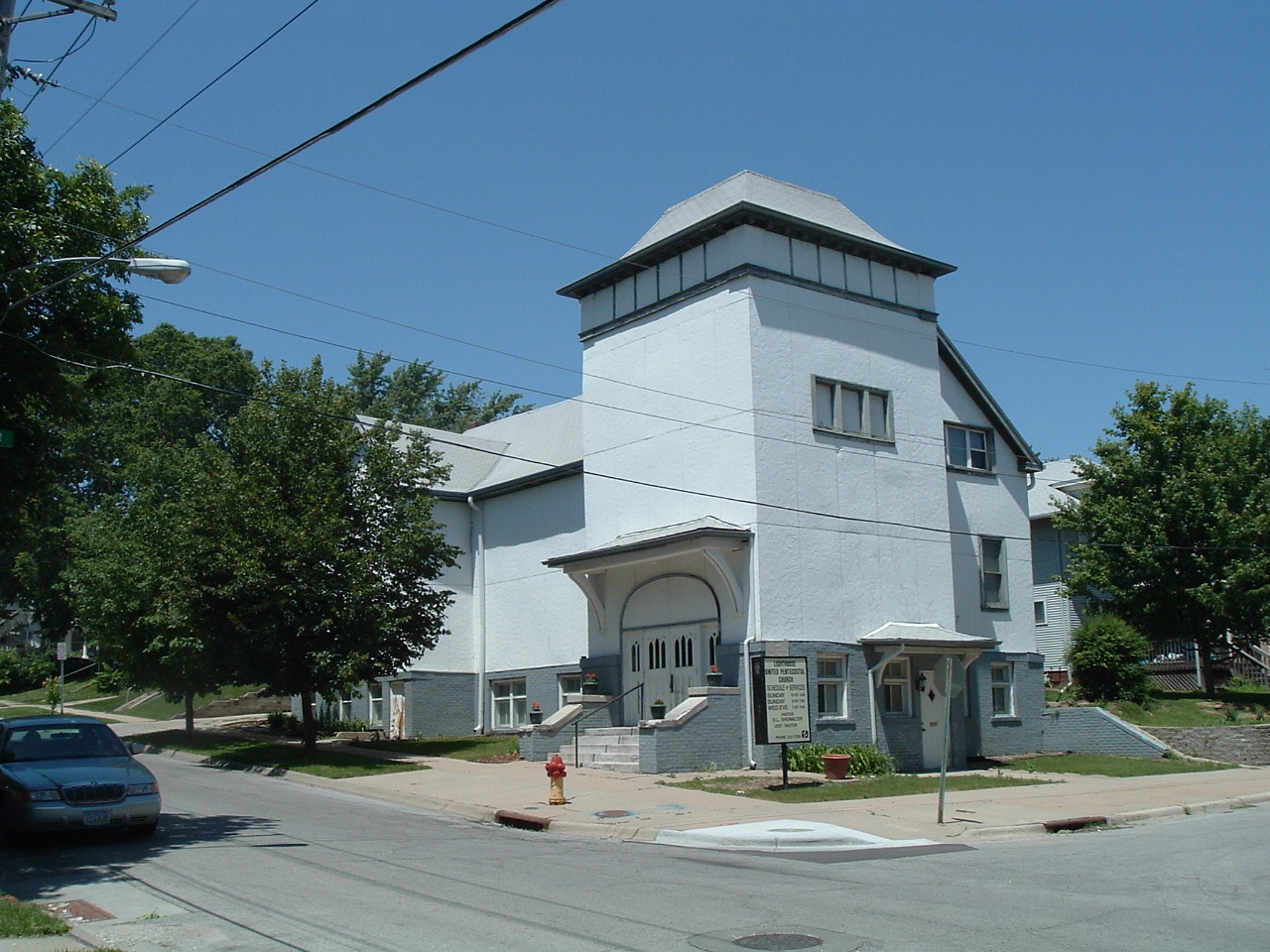
By 1880 when the Swedes were ready to form their own group they called upon Carl Lundgren of Stromsburg to chair their organizational meeting. We first met Lundgren in the Swede Home history, as he was the first pastor to minister to that group of Polk County Swedes in 1872. "He was considered a good preacher" records Sandahl, but to that loyal Lutheran the fact that Lundgren became a Baptist and helped organize the Stromsburg Baptist Church in 1873 causes Sandahl to suspect that he had been sailing under false colors at Swede Home. Also assisting in the formation of the Omaha church was A. Norene, a Swedish Baptist from the Council Bluffs congregation.

Prominent Stromsburg Baptist C. Lundgren
By the time the Omaha group formed, Stromsburg had grown to 100 members and evidently Lundgren was considered a regional leader. We note that the Lutheran historian is silent about Lundgren's later Baptist career as is the Baptist historian about Lundgren serving a Lutheran congregation; it is only by comparing the two that we can weave them together.
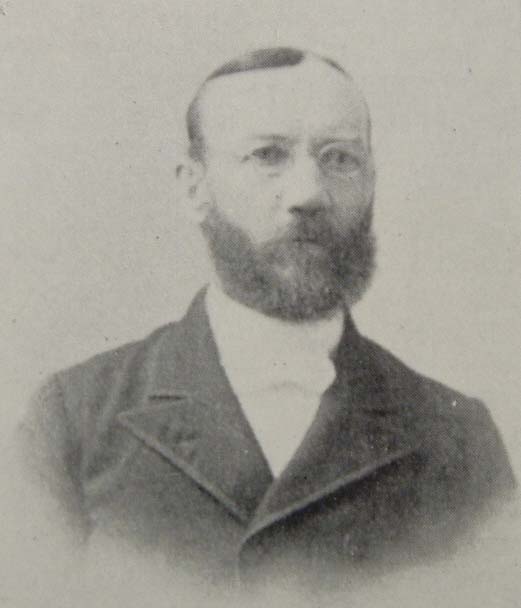
N. Hayland: first graduate of Edgren's seminary and
first pastor at Omaha First Swedish Baptist Church
In its prime, the Webster St. church had reached 187. Other pastors listed as serving Omaha in their seminary records are: J. Johnson '91-93, P. Swartz '93-98, China missionary C. Vingren '98-01,?, G. Nyquist '06-07 (with the seminary note, "Luterska Präst"),?, A. Lagerquist '10-14, L. Johanson '11-13, A. Lawrence '14-16, P.G. Nelson '17-19 and C.A. Segerstrom '20 to date of seminary history publication, '21. In later years Harold Wilson, dean of "Omaha Bible Institute" led the congregation to growth in the early fifties, but apparently it was now Bemis Park American Baptist. The Eagle Heights Baptist congregation is a General Conference (originally Swedish) church which today continues in the western part of Omaha after moving there from a "Florence" location (Kruse).
We insert here a speculative note concerning the unusual presence of a "Lutheran priest" above. There was a noted Lutheran priest named Nyquist reported in the Wahoo Luther College account in Sandahl; he had been at Gustavus Adolphus College in Minnesota but was under suspicion in Augustana circles and was an unsuccessful candidate at Wahoo. If he is the same person, one would have to overlook variations in his first initials as reported: "J.P." in Sandahl, "G" or "Per" in Baptist records and the Wausa Centennial book. The Sandahl and Wausa Nyquists refer clearly to the same person, whether this is the Baptist's "G. Nyquist" is speculative. The Wausa relatives were Mission Friends.
Just west of Omaha is the community of Valley, where Swedish Baptists enjoyed considerable success. They initially met in a railroad depot, but when the decision was taken to build the location was apparently in dispute and two congregations resulted. Later they joined in a third building which united the Valley Swedish Baptists, some of whom had come from Estina to the south (Wicklunds and Vedins are mentioned). Rev. N. Hayland of Omaha pictured above figured in their founding.
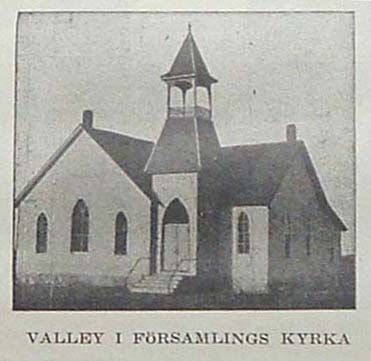
The First Valley church

The Second Valley church

The ultimate Valley Swedish Baptist church
There is more to the Valley story, as we learned late in 2007 when on a visit to see if the church survives. Indeed it had, and looked to be in very good shape though 90 years old or so; it now is a community church in which Presbyterians and I believe Methodists too have joined with the Baptists. The local librarian supplied me with their centennial book. What a surprise to find that their 1977 centennial program included a Swedish service led by our friend Rev. Earl Byleen from Stromsburg! This church formed a remarkable union with the local Presbyterian body in 1943. The historian was careful to explain that this was "a merger and not a federation." Each new member declares whether he/she enters as a Baptist or as a Presbyterian...and thereafter is considered such! From this visit comes this present-day picture.
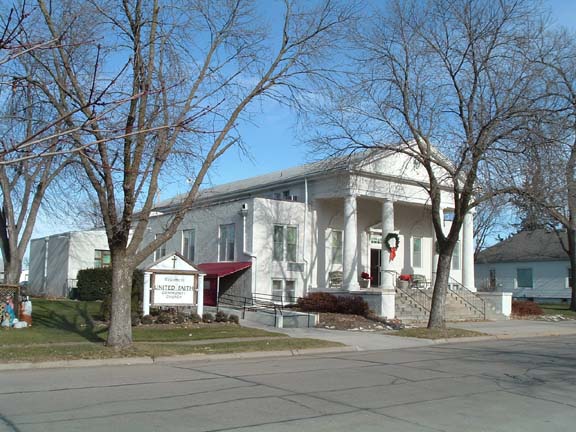
Valley Swedish Baptist church today!
Omaha Mission Friends

The first page of the 1912 anniversary book
illustrates their regard for Waldenström and Björk
The 25th anniversary historian of the Nebraska Mission Association remembers the earliest group of Mission Friends in Omaha as meeting together for prayer and song around readings from the Pietisten Swedish newspaper and, in particular, Waldenström's sermons. They were joined by noted visiting pastors John Peterson and Andrew Hallner. Though no doubt members of this group associated themselves with the Immanuel Lutheran congregation, these preachers were not allowed in Augustana churches. Also at the initiative of the Mission congregation of Fremont, Iowa, where J.A. Hultman and John Wenstrand were active, an invitation to Mission evangelist E.A. Skogsbergh was extended to hold evangelistic meetings in Omaha. These seem to have had good results.
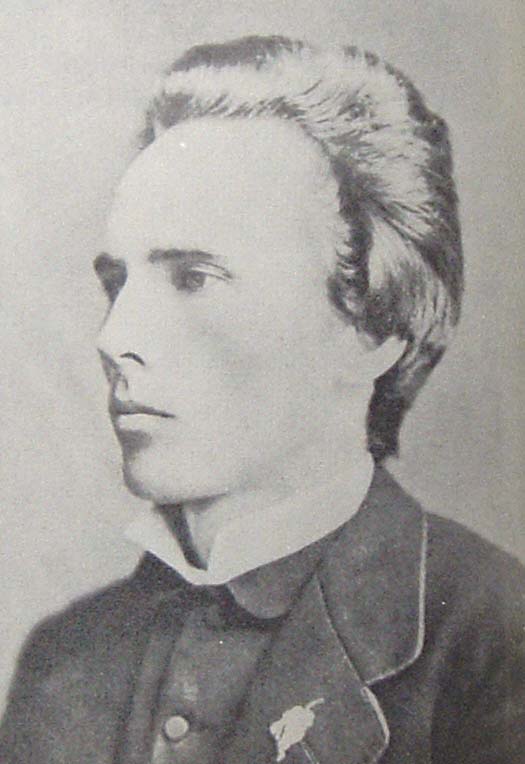
E.A. Skogsbergh, Mission Friend evangelist
Covenant historian Karl Olsson tells us that Jönköping, the "Swedish Jerusalem" was home to John Peterson, C.A. Björk, the Hultmans, J.M. Sanngren and other early Mission Friends. This nucleus of Mission Synod pastors supported the call to Emanuel Berg of Des Moines to be missionary in Omaha in 1881. Berg was later to figure centrally in the work of the Covenant Hospital.
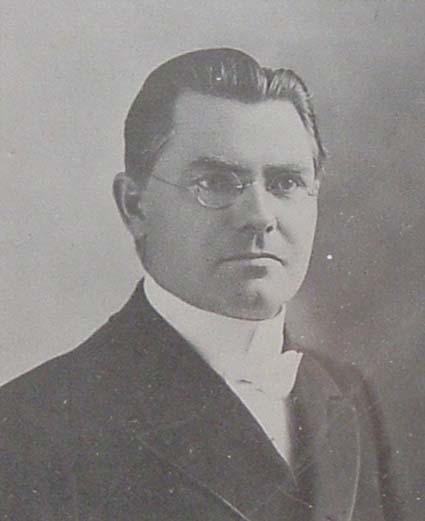
E. Berg: Waldenström had visited him in Des Moines
and was "unimpressed" with his faith healing emphasis

The Mission Friends first home in Omaha, 17th St between Dodge and Capital
It had been a Methodist church and is visible in early downtown photos
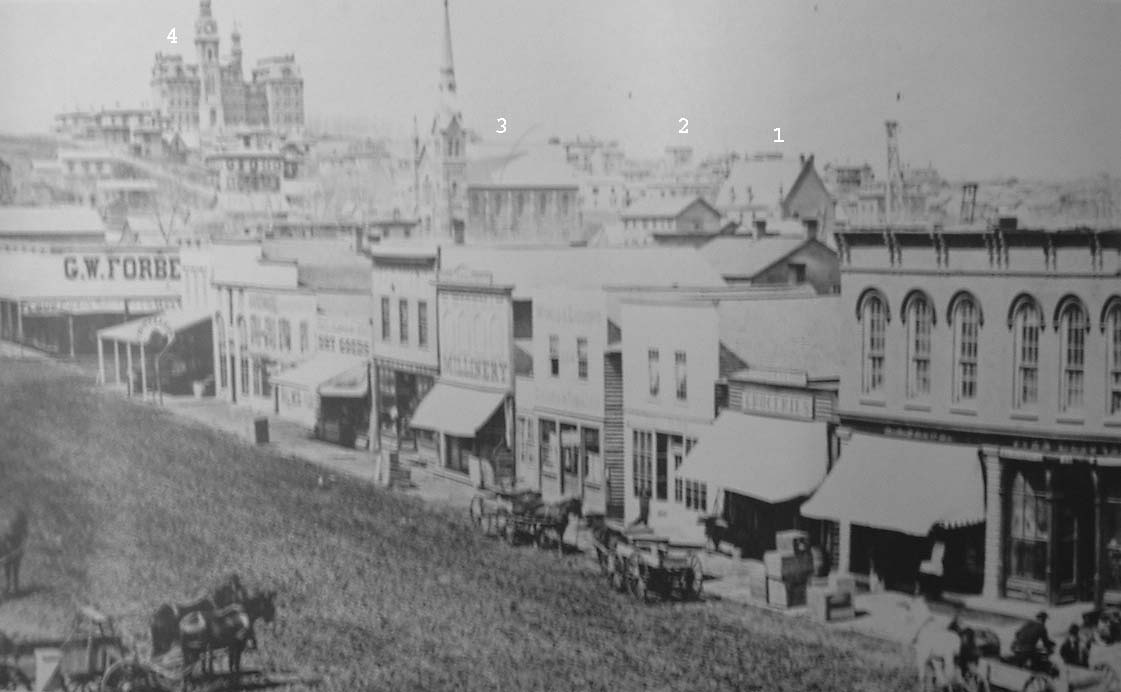
Downtown Omaha 1879.
1) First Methodist, purchased by the Mission group
2) Trinity Cathedral
3) First Presbyterian
4) Statehouse, now Central High
For now the formula of Omaha Mission Friends and their melodic leader J.A. Hultman made for thriving success downtown. The building they had purchased for $7,500 was sold for $11,000 and they were underway with a new church at 23rd and Davenport. This would be their home from 1923 till 1958 when the present church on 90th St. was occupied and the building passed to the Foursquare Gospel people.

J.A. Hultman's concerts spanned America and Sweden
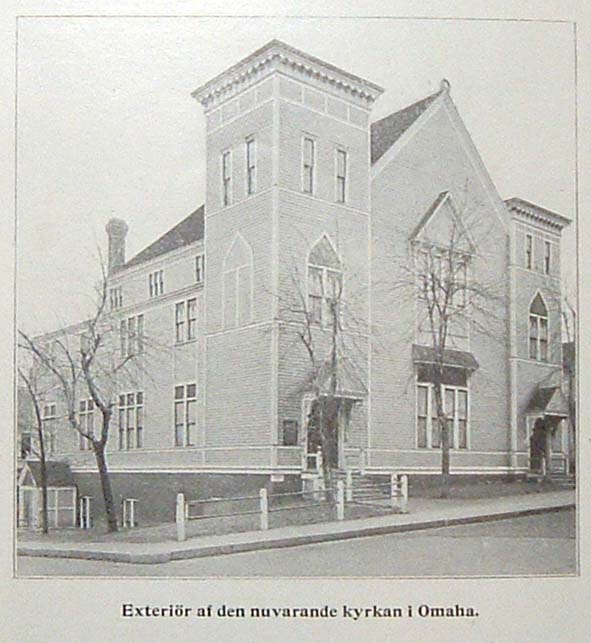
Omaha First Mission Covenant church at 23rd and Davenport
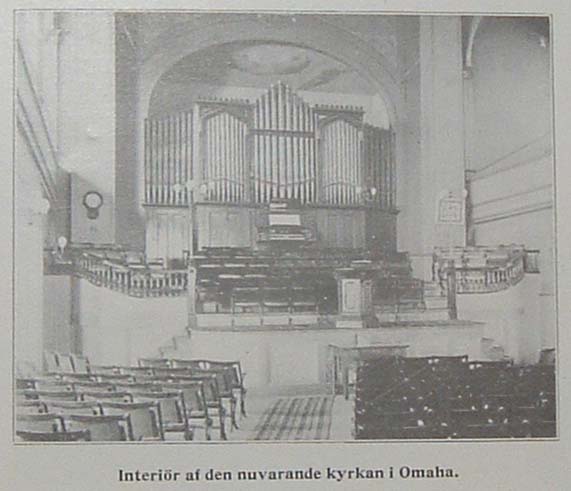
The Omaha pulpit was open even to Franson
Remarkable among the events associated with First Mission Covenant of Omaha was the Franson missionary training session held there in the early 1890's. Its medical advisor, Dr. Holmquist, was from the Immanuel Lutheran group. Normally this would have been held in a Free Mission church, but the Free were not doing very well in Omaha. Though Björk had not opened the doors of his Chicago North Side church to Franson, Hultman in Omaha did. Franson follows us wherever we go.

Franson missionaries at Omaha First

The site at 23rd and Davenport today, just north of Joslyn Museum and Mutual of Omaha
The boards of the Nebraska and Iowa conferences sought to refinance the loan and regain possession of the hospital. They planned to create a new corporation that would hold the institution in trust if and when they regained possession. They were unable to refinance the loan and after a period of receivership the court-appointed trustee sold the hospital to the Salvation Army for $50,000 in May, 1938.
A committee from the Nebraska Conference appealed for help at the 1938 Covenant Annual Meeting to recover hospital. They offered to donate the hospital to the denomination if the denomination authorized a $50,000 loan on the condition that the citizens of Omaha contributed $10,000. The question was debated at considerable length before the motion was defeated by a 91 to 72 vote. The delegates did not want to assume a $50,000 debt in the midst of the Great Depression, especially since the denomination already owned Swedish Covenant Hospital in Chicago that struggled with similar financial problems."
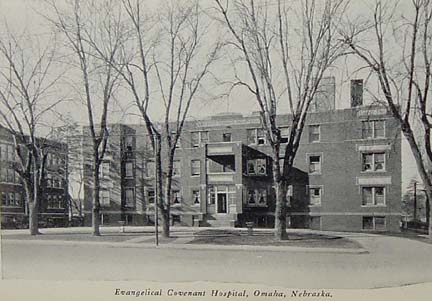
Omaha Covenant Hospital at 24th and Pratt
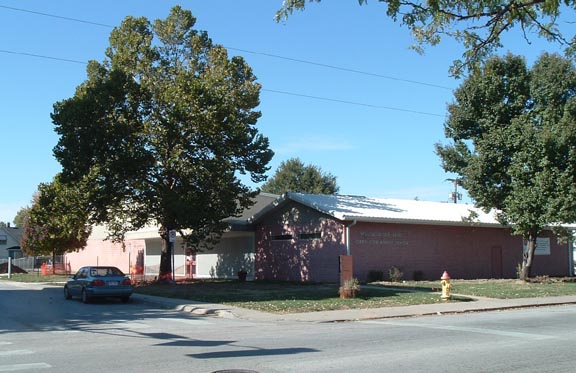
The Salvation Army took over the Covenant Hospital
and continues today in north Omaha
* * *
The Swedish Free Mission
We now pick up the thread of the Free Mission church; Kruse's history indicates that this group traces its history and founding to the same dates and places as the Mission church. But in 1888 this group has its own church at 27th and Marcy southwest of downtown. By 1923 it had ceased operation and sold its property to the Swedish Salvation Army. The Free church historian reports that this congregation relied upon the conference for aid "when it had a pastor".
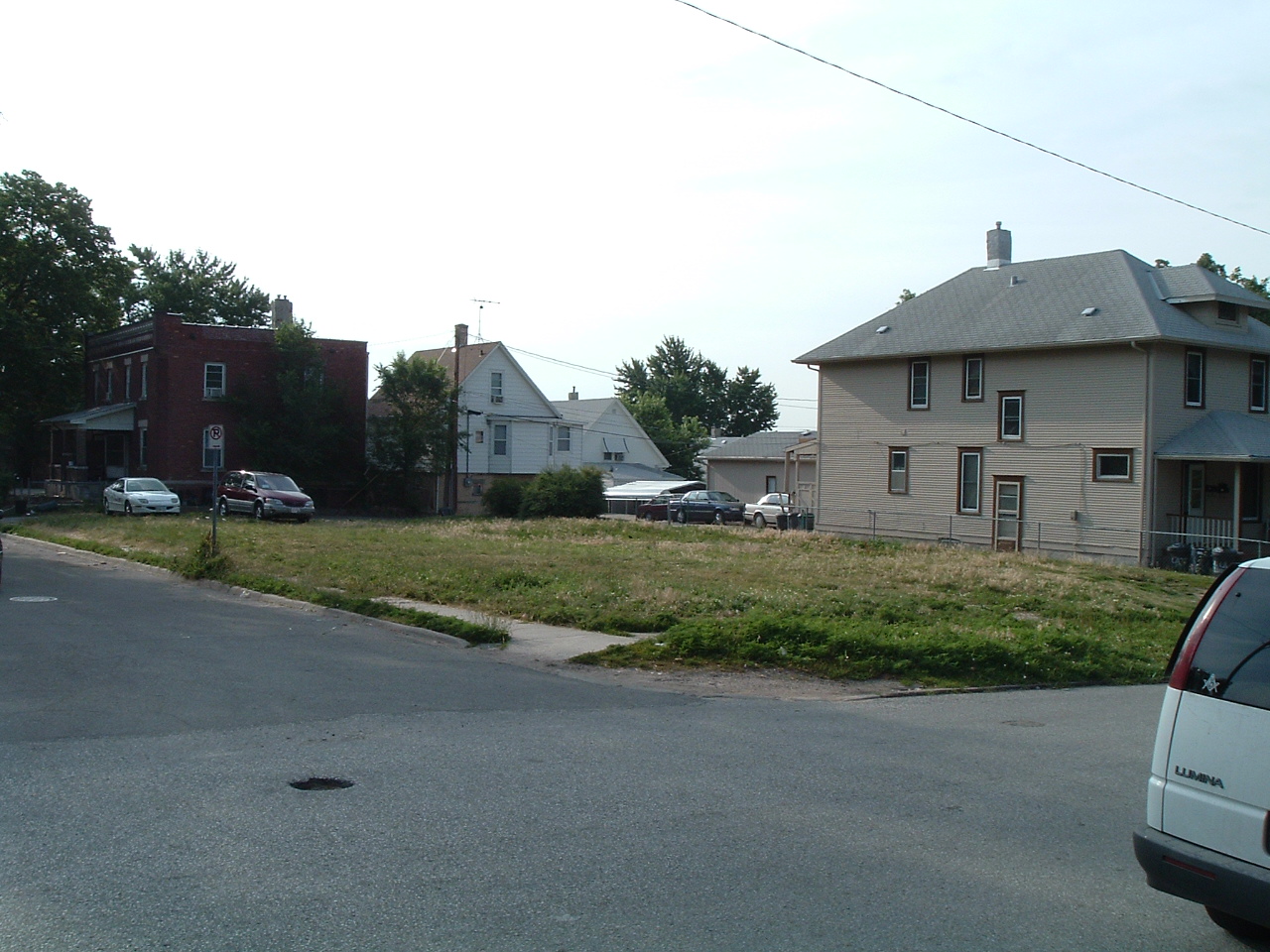
Still vacant is the 27th and Marcy site of the old Free church
We know that one pastor who is listed as serving there was one C.O. Sahlstrom, a somewhat notorious character. He was also later their traveling evangelist for Nebraska. In our year in Princeton we learned that while serving the Covenant church there he was promoting the ideas that came to be known as "free-free". He persuaded a "sanctified" group to split off from that congregation for a time. Charismatic signs were part of this, as Sahlström's succeeding August Davis at Minneapolis confirms. There is an account on this website under "Gems from Palmquist" that tells how a disgusted wife gave some Sahlström "free-free" enthusiasts in her dining room a dousing of gravy! Two other Free pastors are listed as serving Omaha, Adolph F. Nelson and Albert A. Nelson, who was also a student at the Presbyterian seminary in Omaha. (O.M. Nelson knows of others: Fred Nelson, Aug. Gustafson, C. Liljequist, V. Swift, J. Melin, A.P. Youngberg, Wm. Westlund, and Elias Person. He also reports that at the church's disbanding, "several of the remaining members joined with the Mission Covenant." He obviously had good access to information about this group.)
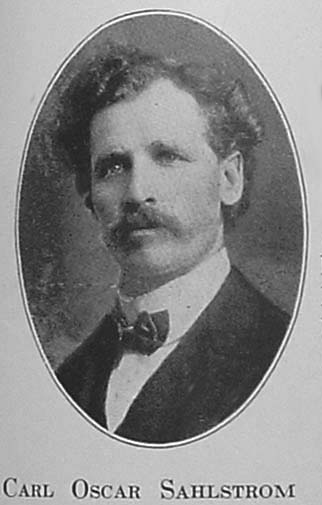
C.O. Sahlström: no gravy in Omaha
The Free Church reentered the Omaha field in later days and now has congregations in Millard (Faith) and at 93rd and Binney (Hope).
* * *
The Swedish Methodists
Our map reviews the locations of many of the churches we have been speaking of. Unfortunately, we can only show one Swedish Methodist church and the location of another. No survivors exist to the best of our knowledge. O.M. Nelson's book on the Swedes in Nebraska locates them in Omaha at the 19th and Burt site with 80 members (1927). Liljegren's history reports that S.B. Newman was the Swedish Methodist on the scene in Omaha from 1869. The earliest site at 18th and California corresponds to this time and reflects the results of his efforts. In 1882 they were reported to have 72 members and in 1884 moved to Izard St.

First Swedish Methodist, the Epworth League
They moved south to 19th and Burt by 1905; perhaps they took a wrong turn. Victor Witting was one of the Swedish Methodist pastors preaching at Omaha. We have not been able to trace their course further.
The Swedish Salvation Army
And now for something completely different!
.jpg)
August and Axel Olson were tinsmiths and founders of "furnace companies" in Omaha as told in Skoog's "Swedes, Danes and Norwegians". This provides another look at the holiness group. "Axel had another friend, Godfrey Stuberg, a Swede who had a church 'out west.' Actually the church was located on Leavenworth at 50th Avenue, and the congregation was composed of 'holy rollers.' Myron's wife, Helen, lived adjacent to the church, and as a young girl, she would observe the services, which during the summer were held in a large tent behind the church. The practice of the parishioners to roll on the floor was watched in amazement. Pastor Stuberg would take the streetcar down to 28th and Leavenworth for visits with Axel, who would take out his Bible, and they would read and pray together. Axel gave money to support Stuberg's church, which was more of a private group of individuals than a public congregation." (p.145)
Kruse reports yet another oddity; a Swedish Presbyterian congregation which occupied a site at 53rd and Davenport in 1888. Today this is in the heart of posh Fairacres: it was listed as merging in the '90's. The only other Presbyterian connection was when S.G. Larson's group met in one of their churches on south 10th St. in the sixties.

Imagine a Mission House here!
Finally there are the 7th Day Adventists. Remember the surviving German Presbyterian church at 18th and Cuming above? On the same corner, there was a 7th Day Adventist church for many years, and a "Scandinavian" 7th Day Adventist group listed this as their address from 1891 to 1900. Adventist proselytisers had most of their success among Scandinavian Baptists according to records available.
Which Swedish church survivor in Omaha is the oldest? You be the judge.